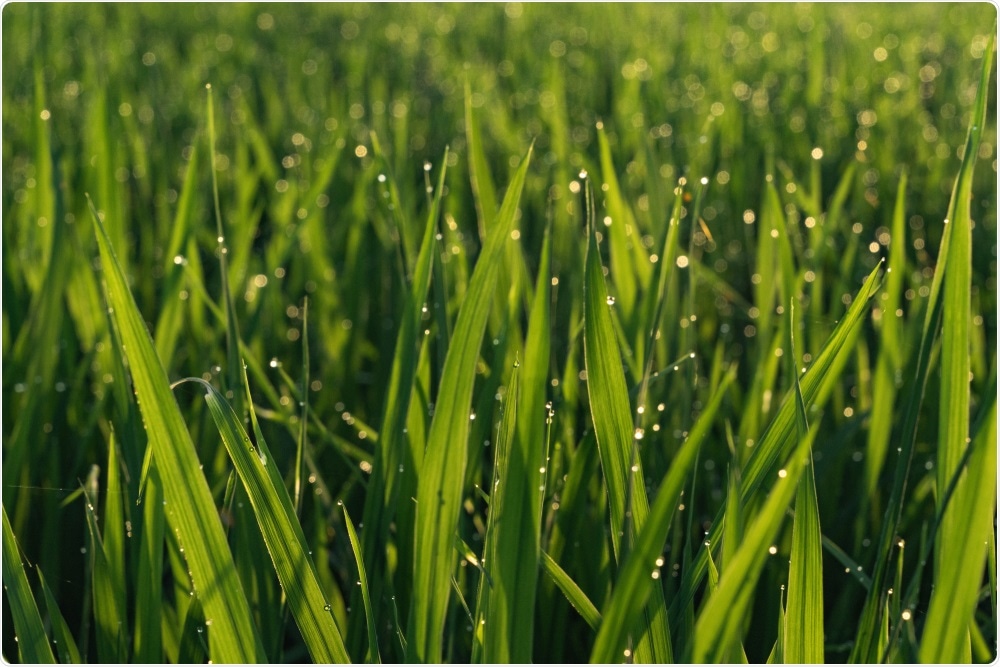Researchers have devised a sensitive and accurate analytical technique for the seven intermediate metabolites in the melatonin biosynthesis pathway of plants. The research, which was published in the Journal of Pineal Research, describes how these pathways are regulated by environmental stress.
 del_selenio | Shutterstock
del_selenio | Shutterstock
Until now, researchers have been unable to characterize the stages of the melatonin biosynthesis pathway due to a lack of sensitive and selective techniques. The seven synthetic intermediates in the melatonin pathway are highly diverse both in structure and composition, making the development of a single technique that can analyze all seven immensely challenging.
It is well-established that melatonin is involved in several developmental processes in plants and provides some form of protection against environmental stress. However, nobody knows how or why this occurs.
Previous research has indicated that liquid chromatography‐mass spectrometry (LC‐MS), in combination with chemical labeling and isotope dilution techniques, can improve the sensitivity and accuracy of melatonin pathway analysis.
Building on this understanding, Professor Ye and the team from the University of Wuhan developed a highly sensitive LC‐MS technique that enables the distribution of all seven melatonin intermediates to be analyzed in rice shoots and roots. The study contributes to the understanding of plant melatonin biosynthesis and how it is modulated in response to stress.
One-step sample preparation
Professor Ye and colleagues developed an accurate strategy to enable the simultaneous analysis of seven plant melatonin metabolites:
- Tryptophan (Trp),
- Tryptamine (TAM),
- 5‐hydroxytryptophan (5HTP),
- Serotonin (5HT),
- N‐acetylserotonin (NAS),
- 5‐methoxytryptamine (5MT),
- and melatonin.
Their method uses one‐step dispersive solid‐phase extraction (DSPE) purification and dansyl chloride (DNS‐Cl) labeling coupled with LC-MS. Unlike other techniques, this method is highly sensitive and able to detect changes in each of the metabolites in response to abiotic cadmium (Cd), an environmental stressor.
The researchers found that the use of DSPE, followed by the reagent graphitized carbon black (GCB) simplified and optimized the process of sample preparation, whilst DNS-Cl labelling improved the ionization efficiencies of the metabolites.
The latter enhances the sensitivity of the proceeding LC-MS analysis, overcoming the issue of poor chromatographic separation associated with traditional LC-MS.
Two pathways, one stress response
There are two major biosynthetic pathways involved in plant melatonin synthesis - Pathway I and Pathway II. The two pathways are the same until the point of serotonin, where Pathway I proceeds via the enzyme ASTM1 to produce 5-Methoxytryptamine (5MT) and Pathway II proceeds via SNAT1 to produce N-acetylseratonin (NAT).
Using their highly sensitive technique, the researchers were able to demonstrate that Pathway I dominates under normal conditions, whereas Pathway II is induced in response to Cd stress. Pathway II then governs the majority of melatonin production.
To further prove this shift in pathway dominance, the researchers used quantitative real‐time PCR (qPCR) to monitor the changes in gene expression. They observed a 200‐fold increase in ASTM1 in rice shoots and roots response to stress, which backed up their research.
'A dramatic reduction' in sample quantity
These findings, whilst unequivocal, provide only a cursory understanding of the genetic basis of pathway operation. Further analysis of the melatonin synthesis pathway will be vital if we are going to exploit this pathway for agriculture.
Although previous studies have proposed pathways, the mechanisms and conditions that favor their initiation and/or dominance remained unclear. The work of Professor Ye and colleagues has advanced this understanding, demonstrating melatonin biosynthetic modulation in response to Cd stress. Further, the proposed strategy reduced the mass of plant samples necessary for analysis to 10mg, which researchers remark “provides a dramatic reduction in the required sample quantities compared to previous reports”.
Source:
Ye, T., et al. (2018). Metabolic analysis of the melatonin biosynthesis pathway using chemical labeling coupled with liquid chromatography‐mass spectrometry. Journal of Pineal Research. doi.org/10.1111/jpi.12531.